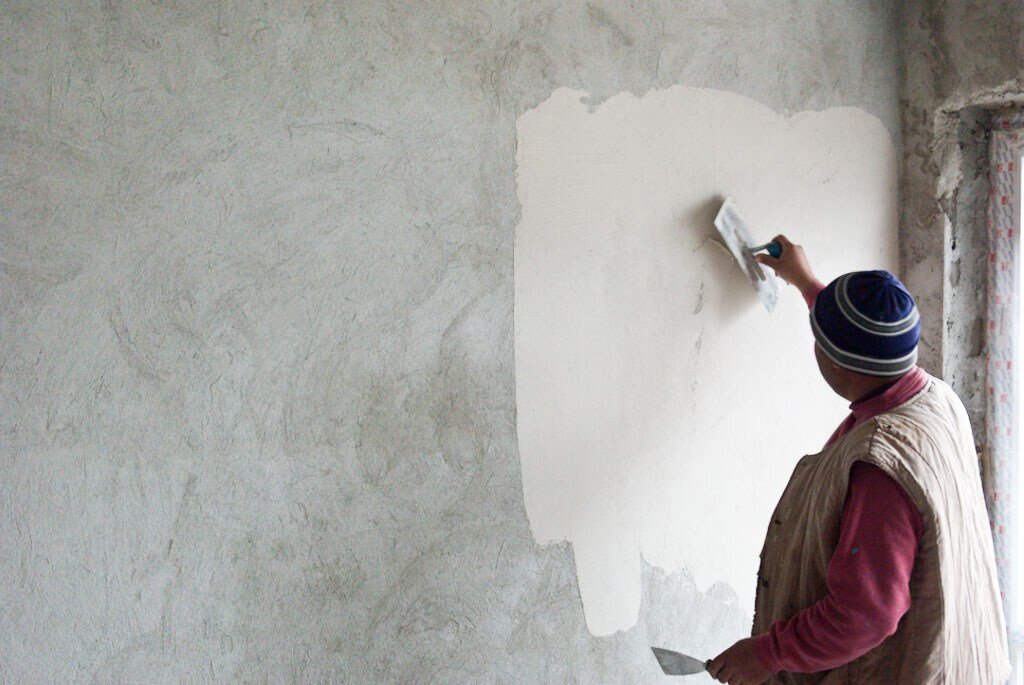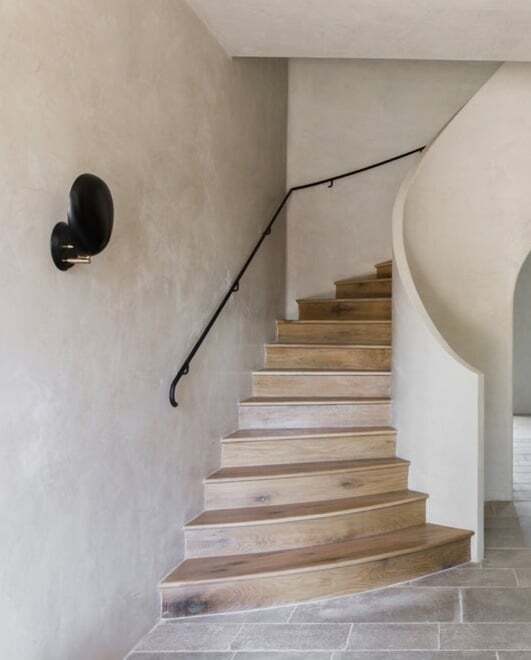Plaster is considered a high-end wall finish. The installation of plaster walls requires special training and skills making it more of a labor intensive process than hanging or repairing drywall. Aside from these factors, a plaster wall can create a texture and feel to your home that no other wall can match.
Plaster is typically made from limestone (calcium carbonate) or gypsum (calcium sulfate). It’s mined, cooked, and ground into a powder. Different additives, like sand or marble, are added to the powder to give the resulting plaster different textures and colors. After mixing the powder with water, it’s coated onto a wall or board using a trowel.
Because it’s so durable, designers and architects can use a plaster finish on interior and exterior walls, giving a home a strong connection to the outdoors and a cohesive and holistic look throughout.
There’s also an artistic quality to a plaster wall finish: It is hand-applied by an artisan, which can leave traces of brush strokes and variation in textures. Venetian plaster, which is a polished-plaster mixed with marble dust, gives a wall the illusion of depth on a flat surface.
Plaster wall finishes have popped up lately in projects by influential designers and architects across the country, and we’ve seen homeowners showing off their newly renovated plaster wall finishes on Instagram.



